Special Report
9 Countries That Control the World's Nuclear Weapons
Published:
Last Updated:
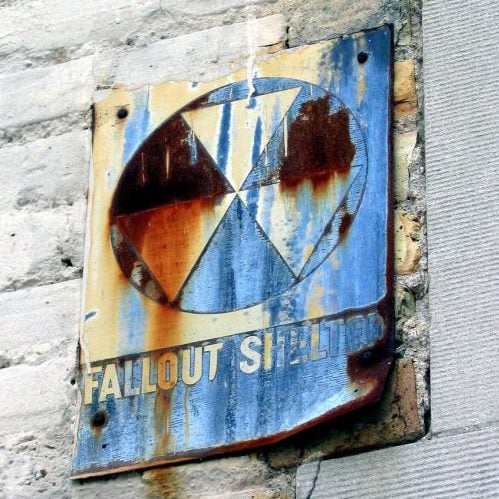
After the first atomic weapon was used on August 6, 1945 against Hiroshima, Japan, the global count of nuclear weapons rose to a peak of approximately 70,300 warheads during the Cold War. The number of nuclear weapons in the world has fallen to an estimated 15,350 since then.
24/7 Wall St. reviewed nuclear stockpile counts estimated by researchers at the Federation of American Scientists (FAS), an organization that works to reduce the spread of nuclear weapons and increase government transparency on the issue. Nuclear warheads may be retired, stockpiled, or deployed — which means they are fully operational. Russia leads the world with approximately 7,300 nuclear warheads, and the United States is a close second with 7,000.
Click here to see the world’s nuclear powers.
According to the National Nuclear Security Administration, an agency within the U.S. Department of Energy, the possibility that extremist groups or rogue nations will acquire nuclear weapons is one of the gravest threats facing the international community. This is one reason military stockpiles are often closely-kept national secrets. To compare arsenals, the FAS estimates the sizes of nuclear stockpiles from unclassified information. Similarly, the circumstances under which a country would consider using nuclear weapons is rarely made public. Because of their destructive nature, however, many countries adhere to a no-first-use policy.
In an interview with 24/7, Hans Kristensen, director of the Nuclear Information Project at FAS, noted that countries often attempt to conceal or even falsely deploy weapons as part of deception tactics. This further adds to the challenge of accurately estimating nuclear stockpiles.
While virtually all currently operational nuclear warheads vastly exceed the destructive capacity of the roughly 15 kiloton bomb dropped on Hiroshima, nuclear warheads include a wide range of weapons. “Different countries have different strategies,” Kristensen said. This changes what types of weapons a country develops. For example, while the United States and Russia may develop long-range ballistic missiles, Pakistan and India have stockpiled short-range, defensive missiles.
Maintaining nuclear arsenals is extremely costly. For this reason, the U.S. and Russian arsenals, which are dramatically larger than the arsenals of any other country, will likely continue to shrink — albeit in tandem. In the global effort to lower the number of nuclear weapons, several multi-party talks have been attempted. In 2011, for example, the United States and the Russian Federation entered a treaty agreement on measures for the reduction and limitation of strategic offensive arms, also known as the New START Treaty.
Reduction efforts are frequently laden with political factors. Kristensen explained that Russia and the United States “want to make sure they have enough to be the big power but they also don’t want to waste a lot of resources having to maintain larger force levels that aren’t strictly speaking necessary for […] their strategies.”
To identify the world’s greatest nuclear powers, 24/7 Wall St. reviewed warhead inventories for nuclear countries estimated by researchers at the Federation of American Scientists (FAS), an organization that works to reduce the spread of nuclear weapons and increase government transparency. The size of each country’s arsenal is an estimate arrived at using unclassified information, and it remains relatively uncertain due to the lack of military arms disclosure from the countries. Numbers are based on a variety of sources, including satellite images, public statements from public officials, newspapers articles, private conversations with government officials, and historical analyses over many years. Military spending as a percentage of GDP for each country was obtained from
These are the world’s greatest nuclear powers.
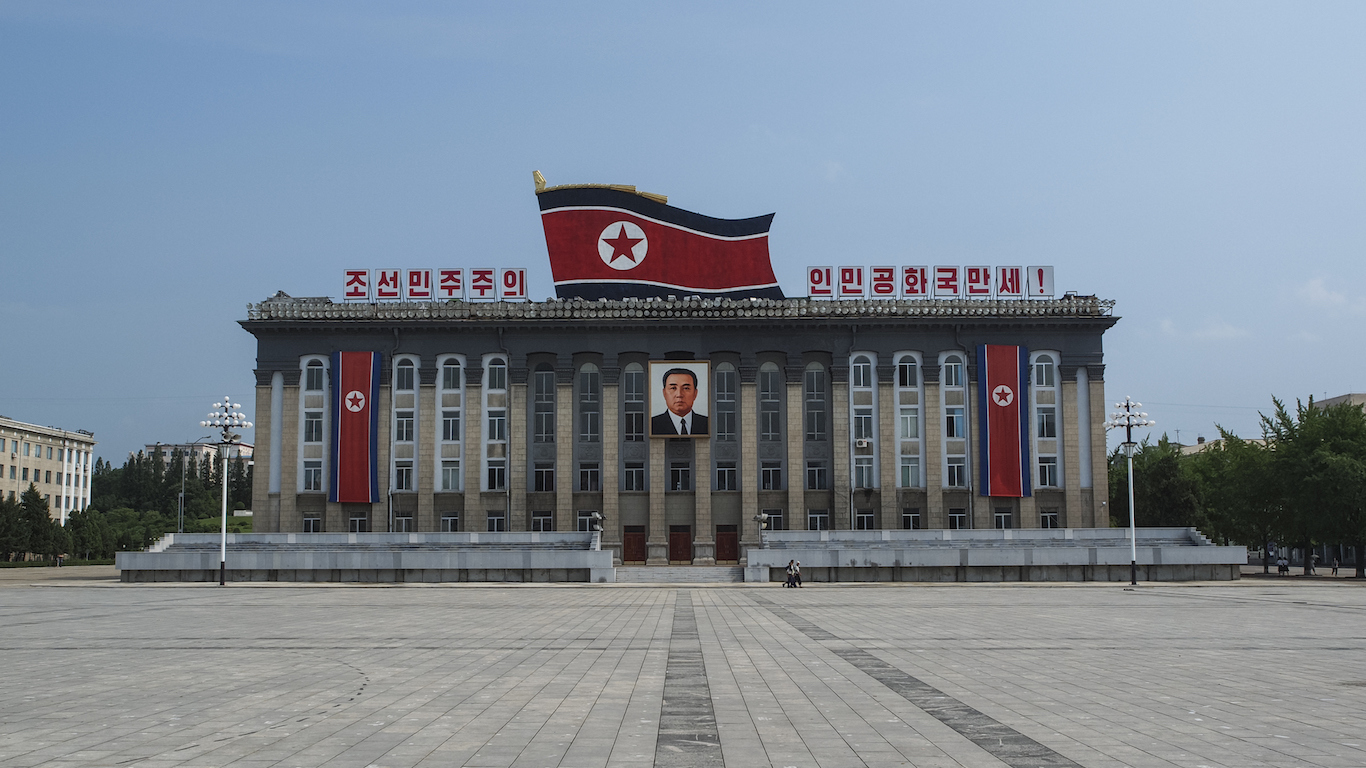
9. North Korea
> Total warheads: N/A
> Deployed warheads: 0
> Military spending as pct. of GDP: N/A
The exact count of a country’s nuclear weapons is typically a closely held national secret. This is especially true of North Korea, which is one of the least transparent nations on the planet. Satellite images have verified the existence of at least three North Korean nuclear test sites, and the country tested nuclear weapons in 2006, 2009, 2013, and twice in 2016. While every country on this list tests delivery systems periodically, and conducts nuclear tests in laboratory settings, North Korea is the only nation currently conducting ballistic tests with live nuclear material.
Despite North Korea’s nuclear testing, there is not enough publicly available evidence to prove North Korea has miniaturized, operationalized, or stockpiled weaponized warheads. The UN Security Council has issued numerous sanctions against North Korea’s nuclear program. Six-party peace talks between China, Japan, North Korea, Russia, South Korea, and the United States that began in 2003 have been suspended since April 2009.

8. Israel
> Total warheads: 80
> Deployed warheads: 0
> Military spending as pct. of GDP: 5.4%
Israel’s nuclear weapons program is not especially transparent. Though the country has had nuclear weapons for decades, the Israeli government’s official position is to neither confirm nor deny their existence. While the country’s 80 some nuclear warheads are no secret, the Israeli government maintains ambiguity for political reasons. Buying necessary materials and know-how from the U.S. and Western European countries, Israel quietly developed a nuclear arsenal with little international protest or awareness. Today, Israel is the only known nuclear power in the Middle East.
Recently, many world powers, including Israel and the United States, suspected Iran was intent on developing nuclear weapons. If successful, Iran would pose a unique threat to Israel. In a contentious deal, known as the Joint Comprehensive Plan of Action, the United States lifted economic sanctions on Iran in exchange for regular inspections of its nuclear facilities and significant downgrading of the country’s ability to enrich nuclear material.
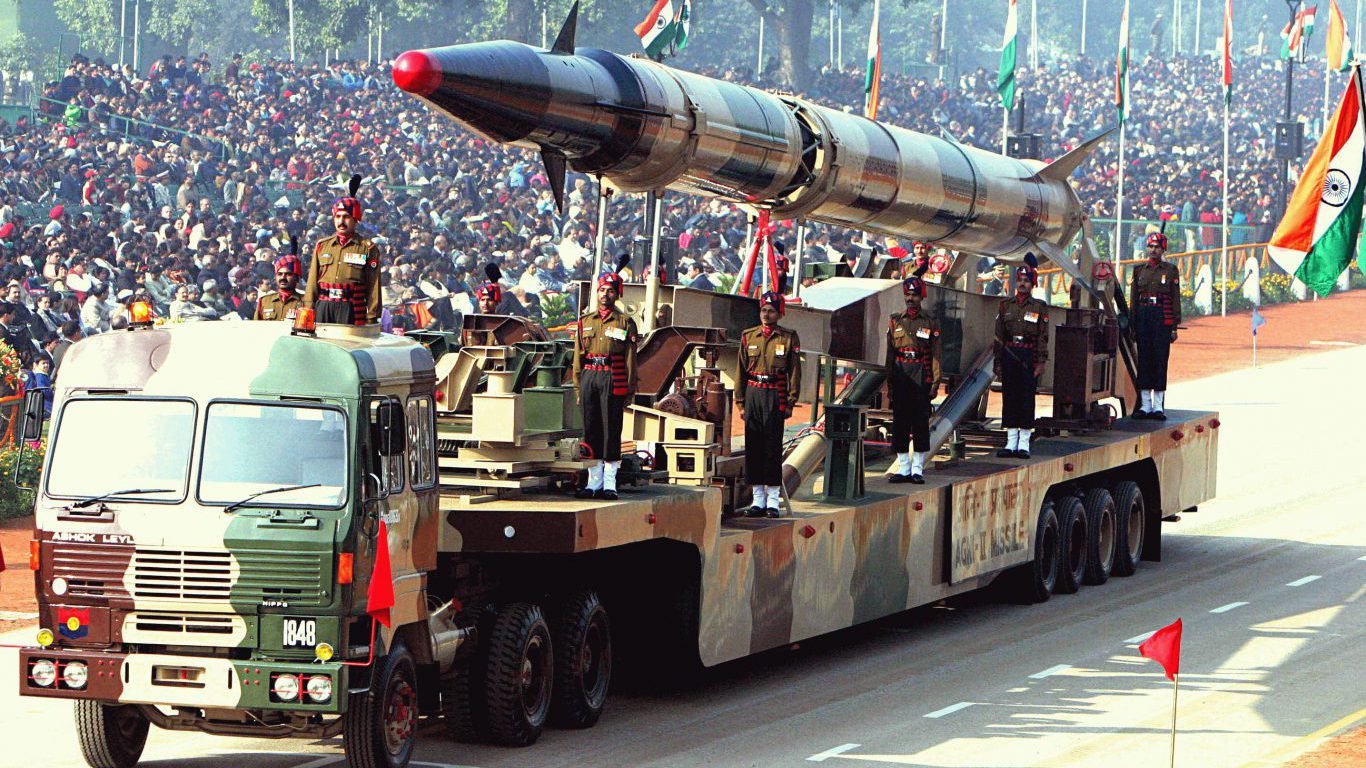
7. India
> Total warheads: 120
> Deployed warheads: 0
> Military spending as pct. of GDP: 2.3%
India currently has about 120 nuclear warheads. India is not a signatory of the nuclear non-proliferation treaty, and as such, it is one of a handful of countries actively increasing their nuclear weapon stockpiles. India tested its first nuclear weapon in 1974, in a likely effort to counterbalance China’s military might. Since then, Pakistan, India’s rival and neighbor to the west, has also developed nuclear weapons, making the two countries’ already strained relationship especially dangerous.
India is actively working to modernize its nuclear strike force technology. Currently, bomber planes are its most likely method of delivering a nuclear payload. However, with recent progress in the country’s missile delivery system and the increased range to thousands of miles, India now has the capability of striking major cities in China. Still, nuclear conflict between these two neighboring countries is unlikely as they both have a no-first-use policy in effect.
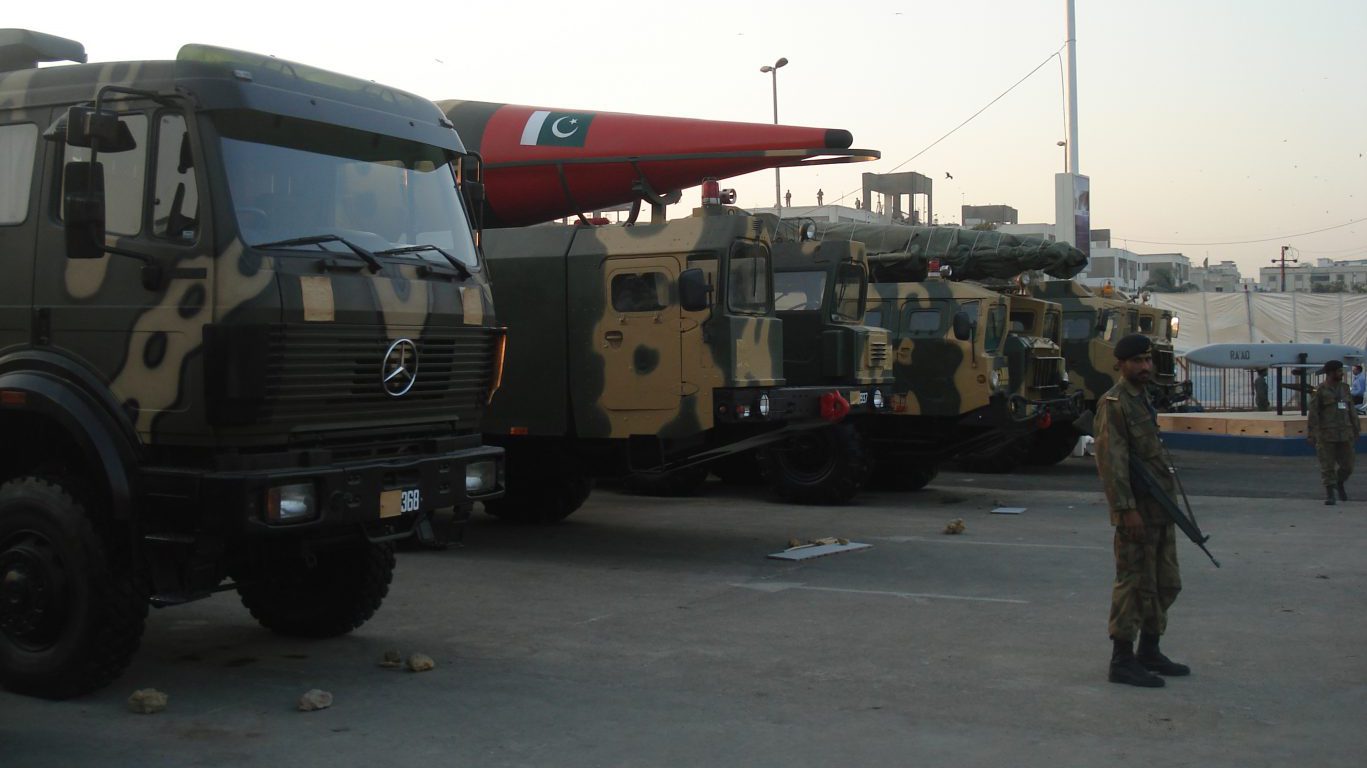
6. Pakistan
> Total warheads: 130
> Deployed warheads: 0
> Military spending as pct. of GDP: 3.4%
Likely inspired by India’s nuclear weapons program, Pakistan acquired bomb making materials and expertise from China in the early 1980s. After years of developing and weaponizing its nuclear arsenal, the country’s prime minister officially acknowledged Pakistan’s possession of nuclear warheads in September 1997. The following year, the country tested six nuclear bombs.
Unlike other nuclear powers in South and East Asia, Pakistan does not have a no-first-use policy in effect. Taken in consideration with the country’s considerable short range nuclear capabilities, the implication is a willingness to use nuclear weapons in response to more conventional military aggression from its neighbor and long time rival, India. Currently, Pakistan has about 130 nuclear weapons, up from roughly 100 in 2011. While the country is still expanding its arsenal, how significant the expansion will be in the next decade will likely also depend on India’s nuclear weapons development.
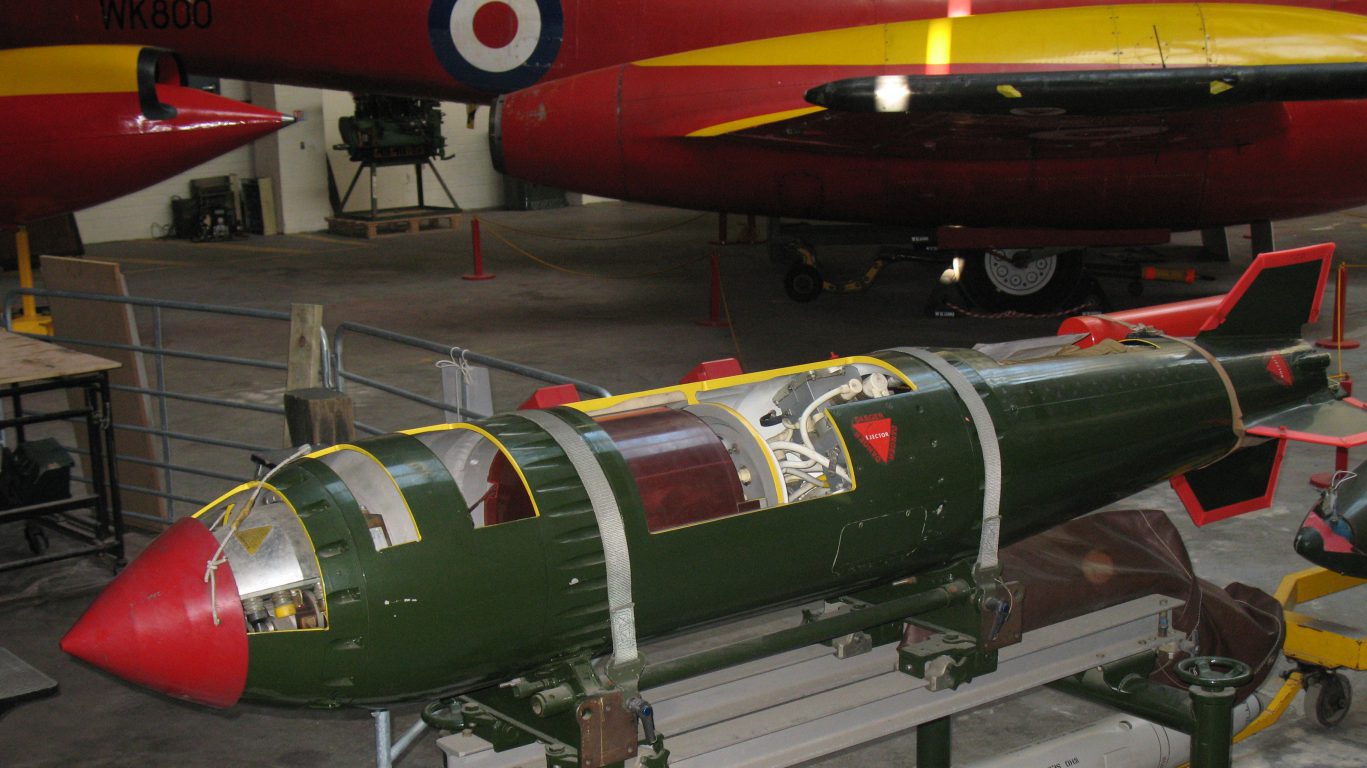
5. United Kingdom
> Total warheads: 215
> Deployed warheads: 120
> Military spending as pct. of GDP: 2.0%
The United Kingdom has diminished its nuclear stockpile considerably in recent years. The British nuclear arsenal peaked at about 500 warheads between 1974 and 1981. Since then, the arsenal has been reduced by more than half to a current count of about 215 warheads. In addition to its own weapons, Britain stored hundreds of American bombs during the Cold War. By 1992, under the direction of President George H. W. Bush, all American bombs in the U.K. were returned to the United States to be dismantled.
Unlike the United States and Russia, the U.K. reduced its nuclear stockpile unilaterally. However, a reduction of nuclear weapons is not an abdication of nuclear power. The U.K. is one of only four countries with nuclear weapons on high alert, ready to be used at a moments notice for purposes of national security. The country has also announced plans to modernize its fleet of nuclear ballistic missile submarines.
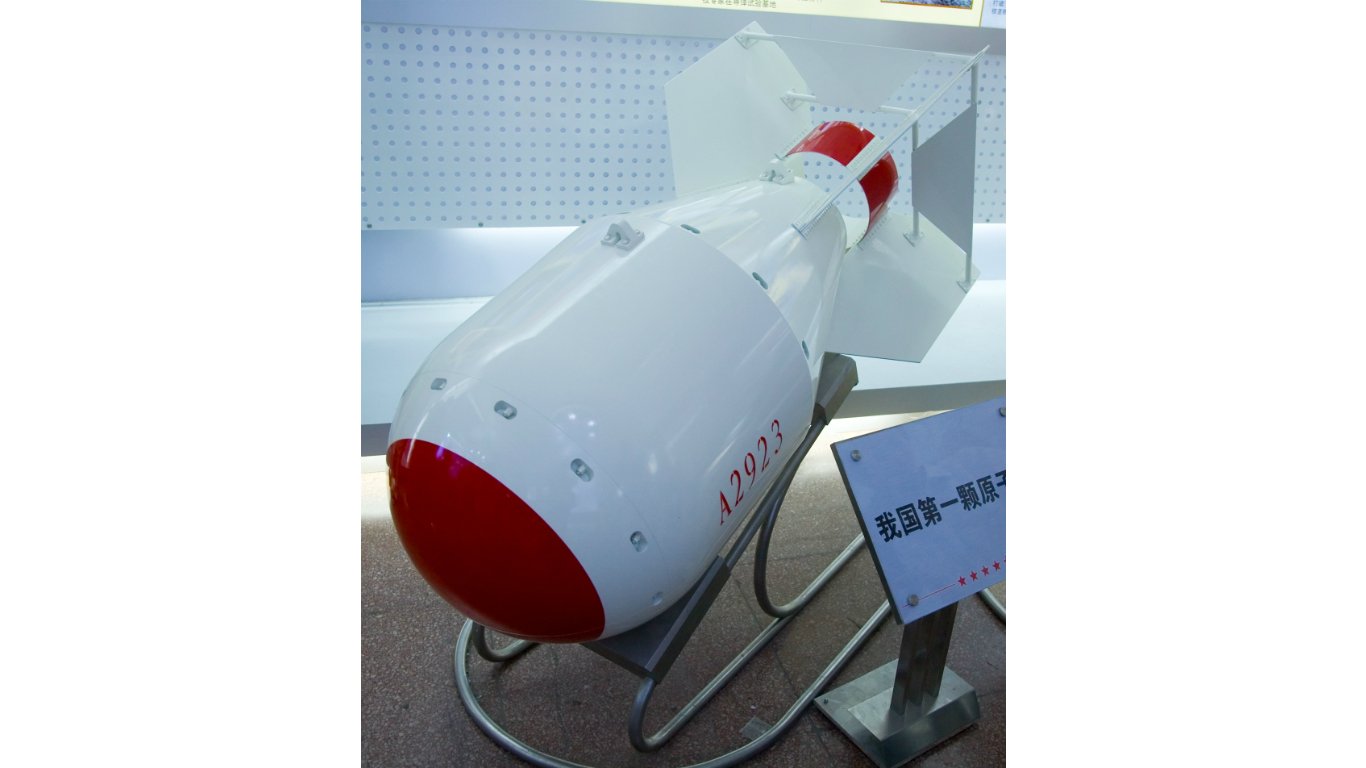
4. China
> Total warheads: 260
> Deployed warheads: N/A
> Military spending as pct. of GDP: 1.9%
China is the only permanent member of the U.N. Security Council that is expanding its nuclear arsenal. The country’s missile delivery systems are diverse and largely dictated by perceived threats from the United States and Russia. Out of fear that a first strike from another nuclear power could disable missile silos, the Chinese developed mobile intercontinental ballistic missiles. Currently, China is capable of delivering a nuclear payload from the land, air, and sea.
Despite diverse and sophisticated delivery methods, China’s official posture prohibits nuclear weapons to be deployed on missiles under normal, peacetime circumstances. In addition, much like India, China has a no-first-use policy in effect, meaning it will not be the first country to use nuclear weapons in conflict under any circumstance.

3. France
> Total warheads: 300
> Deployed warheads: 280
> Military spending as pct. of GDP: 2.1%
France has an estimated 300 nuclear weapons, the vast majority of which are deployed and operational. Two of the country’s four ballistic missile submarines are always armed with nuclear warheads. The country is also capable of delivering a nuclear payload by jet plane, though French bombers are not likely on round-the-clock high alert.
Three years after a 1994 mutual detargeting agreement between the United States and Russia, France announced it no longer had any nuclear weapons aimed at Russia. Roughly a decade later, France confirmed none of its missiles were targeting anyone. Like most other nuclear countries, France is modernizing its arsenal. Currently, the country is in the final phase of an eight-year plan to extend the life of its nuclear stockpile into the 2050s. As a part of the plan, France has improved the power, range, and accuracy of nuclear missiles carried by its submarine fleet.
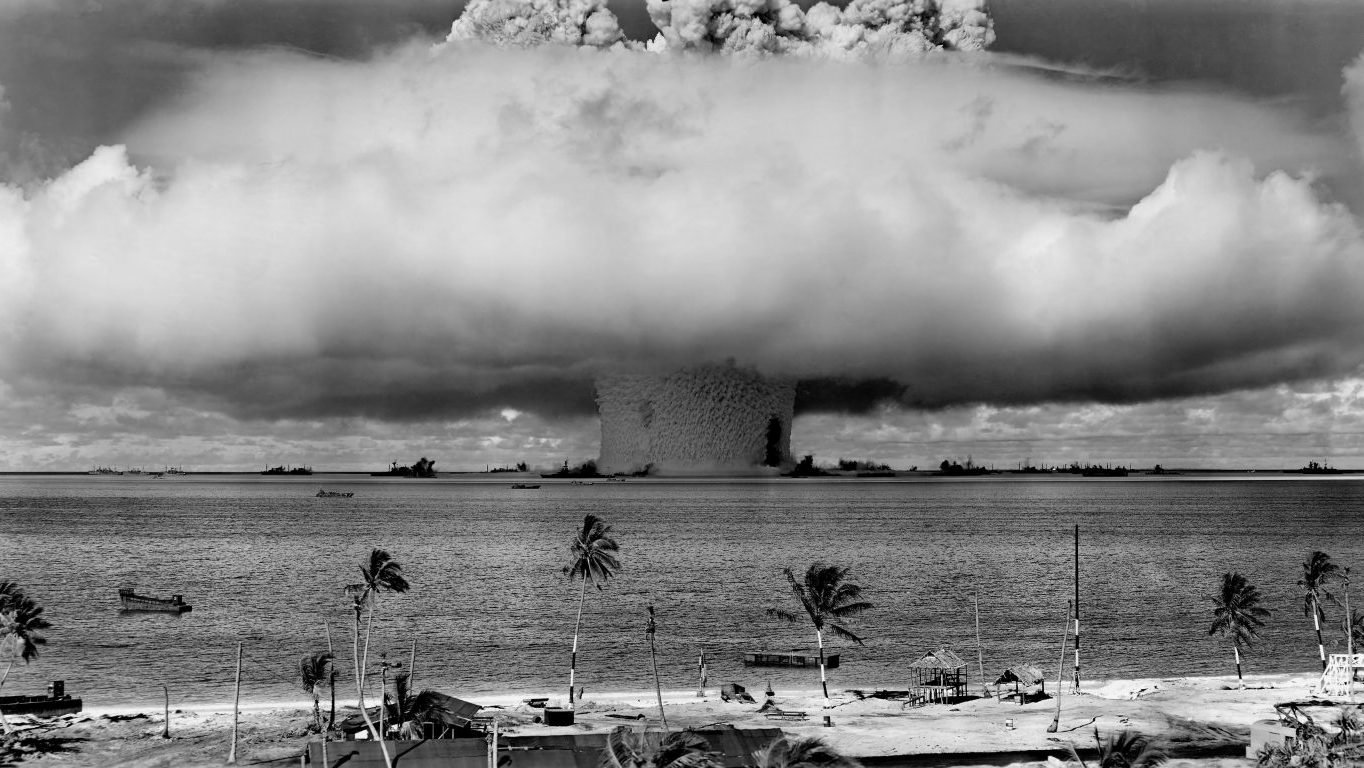
2. United States
> Total warheads: 7,000
> Deployed warheads: 1,930
> Military spending as pct. of GDP: 3.3%
The United States has by far the most powerful and expensive military in the world. A key component of the U.S. global military infrastructure is its nuclear arsenal, which while trailing Russia’s in total inventory, is second to none in the number of deployed warheads. The high cost of maintaining a nuclear arsenal, as well as participation in the bilateral treaty New START, has encouraged the United States to slowly reduce its stockpile of nuclear warheads. Investment in nuclear weapons, particularly modernization projects, remains high despite the reduction. The U.S. plans to spend $348 billion between 2015 and 2024 on maintaining and updating its arsenal.
According FAS research, the U.S. nuclear arsenal could at this moment be reduced by at least a third without having any negative consequence on U.S. military strategy and ability to maintain deterrence. For political reasons, however, the U.S. arsenal will be reduced only in tandem with Russia’s. Further, as FAS researcher Hans Kristensen explained, U.S. military strategy must also take into account protection of its allies.
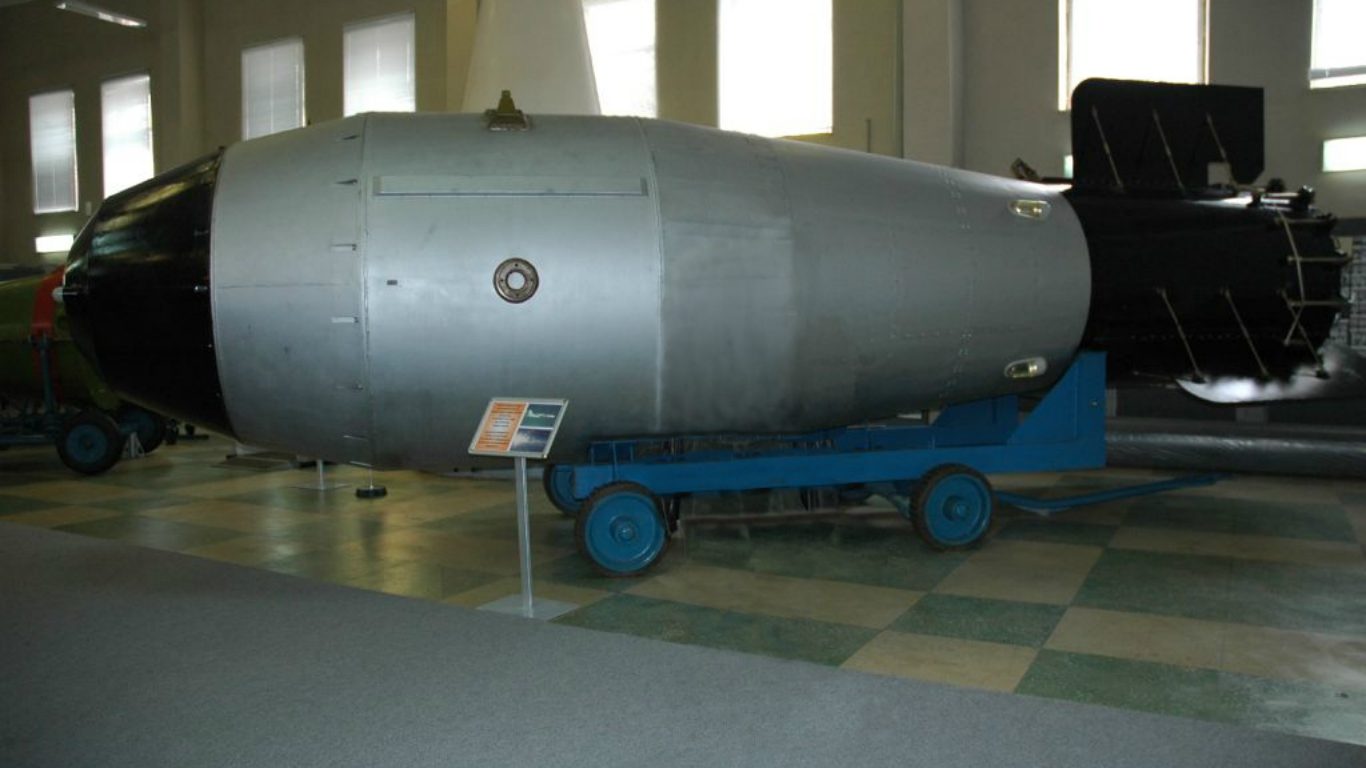
1. Russian Federation
> Total warheads: 7,300
> Deployed warheads: 1,790
> Military spending as pct. of GDP: 5.4%
Russia’s nuclear stockpile peaked at some 40,000 warheads in the 1980s. While the country’s arsenal is much smaller than it was during the Cold War, Russia also has an expensive nuclear modernization program in progress. The transition from ageing Soviet-era technology to modern weapon systems is part of the country’s broad effort to maintain parity with the United States and enhance national prestige. Despite these investments — which reportedly include new countermeasures designed to penetrate missile defense systems widely used by Western nations — the size of Russia’s nuclear arsenal is expected to decline over the next decade. The decline will be due mainly to the New START treaty between the Russian Federation and the United States, as well as financial constraints.
Are you ready for retirement? Planning for retirement can be overwhelming, that’s why it could be a good idea to speak to a fiduciary financial advisor about your goals today.
Start by taking this retirement quiz right here from SmartAsset that will match you with up to 3 financial advisors that serve your area and beyond in 5 minutes. Smart Asset is now matching over 50,000 people a month.
Click here now to get started.
Thank you for reading! Have some feedback for us?
Contact the 24/7 Wall St. editorial team.